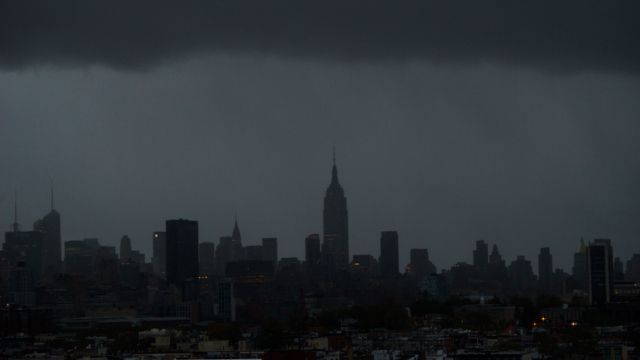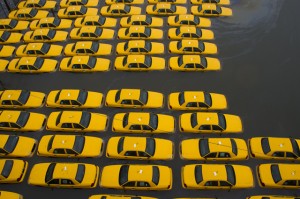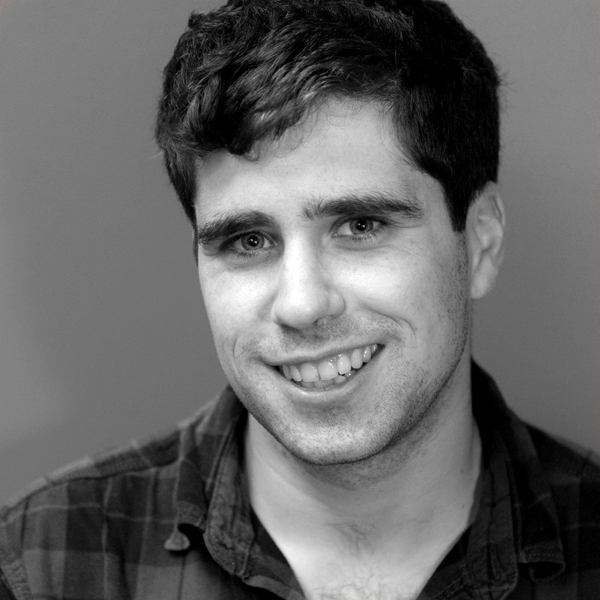
One year ago today, Hurricane Sandy hit New York City — and most of the Eastern Seaboard — like a freight train. It was a storm unlike any the city had ever seen, causing unprecedented flooding in some of the city’s most densely populated areas. Particularly affected were those who were already vulnerable — the poor, the disabled and the elderly.
Despite a week’s warning as the hurricane moved north — peeking in intensity as it smashed into Cuba — the storm revealed our city’s lack of preparedness for a future of ever more severe storms and rising seas. In the chaos following Sandy’s landfall, as government agencies and traditional relief organizations like the Red Cross struggled to respond, community groups picked up the slack. Those efforts continue today.
“Neighbors helping neighbors”
“After we got through the initial months of needing large-scale donations of water and blankets and clothing and heaters and all that sort of stuff, it’s been much more focused on building relationships with individual families, helping them to gut their houses, and helping them get access to grants or insurance information,” says Rev. Michael Sniffen, rector of the church of St. Luke and St. Matthew in Brooklyn’s Clinton Hill neighborhood. “It’s been much more relational and on-the-ground in the hardest hit areas.”
Rev. Sniffen’s church served as one of several staging grounds for Occupy Sandy, a community-based relief effort associated with the Occupy Wall Street movement. Sniffen worked with activists in Coney Island, the Rockaways and Staten Island. Moyers & Company producer Lauren Feeney profiled their efforts two weeks after the storm in this special report:
The church, located well inland on high ground, had power in the days after the storm and was an easily accessible space for volunteers to congregate and for people to send donations. Relief efforts continued to be based there until, on the night before Christmas Eve, an arsonist set the church on fire. It was heavily damaged, but will be fully reopened by this December.
At that point, Sniffen and his fellow volunteers shifted their base of operations from Clinton Hill to the communities that needed the most help. “The relief effort has become much more hyper-local,” he says.
Greg Basta, deputy director of New York Communities for Change, helped out with another locally based relief effort, at times working with the volunteers from Sniffen’s church.

A parking lot full of yellow cabs is flooded as a result of Hurricane Sandy on Tuesday, Oct. 30, 2012, in Hoboken, NJ. (AP Photo/Charles Sykes)
“So as brutal as it was the day of the storm, we knew that we really needed to do something on the ground — building some relief operations. That’s not the type of work that we normally do, but we’re a community organization, people know us and trust us on the ground, so within two days of the storm hitting, we were able to set up relief operations in our office and it just grew exponentially.”
In the course of three days, Basta’s group received over a $100,000 in donations and hundreds of thousands more in necessities like food, clothing and diapers.
“It was a super-effective, immediate response of neighbors helping neighbors,” Sniffen says of the local relief efforts. “Now we’re seeing lots of larger, more hierarchically organized relief organizations coming in and just absorbing millions and millions and millions of dollars in funds that were meant to help those who were displaced or affected in some way. And those were the organizations that we all agreed were ineffective.”
Still recovering
Today, one year after Sandy, many communities are still struggling and it’s uncertain whether New York and its surrounding communities are prepared to withstand the next climate change-related disaster.
Both mayoral candidates — Republican Joe Lhota, who oversaw the MTA’s post-storm recovery, and public advocate Democrat Bill de Blasio — authored op-eds reflecting on the storm and how the city’s approach must be improved before the next disaster hits. Parts of the subway system will remain closed through at least next summer for repairs to damage caused by salt water flooding. MTA officials admit the consequences of the storm could be felt for years. Homes and businesses along the five borough’s coastlines are still abandoned. On one commercial strip near Staten Island’s Midland Beach, almost a third of businesses remain shuttered. Middle-class families are returning to their homes to realize they can’t afford the cost of insurance for the next flood, which they know will inevitably come.
And the US Department of House and Urban Development recently reported that only $5.2 billion of a $60 billion aid package for Sandy victims has been spent.
“The disbursement of federal funds has been incredibly slow, and has actually hampered a lot the city efforts that are going on,” Basta says.
Rev. Sniffen agrees. “I’ve just seen an enormous amount of those financial earmarks going to huge relief organizations that have very high staffing and infrastructure costs and there’s very little money getting to these individuals who really need it,” he says.
Lessons learned
Sandy demonstrated shortcomings in the way we deal with disasters, and city and state officials have taken some real steps to respond. A panel convened by New York Gov. Andrew Cuomo in particular sought to address the huge gas lines that plagued much of the affected area. The state created a strategic fuel reserve and is requiring some gas stations to install generators.
“Climate change is dramatically increasing the frequency and the severity of these situations,” Cuomo said last January. “And as time goes on, we’re more and more realizing that these crises are more frequent and worse than anyone had predicted.”
Basta also points to a proposal by mayoral candidate Bill de Blasio to rely more on community groups during disasters as a step in the right direction.
“What we found was that we were more prepared than an organization like the Red Cross who had received over a $100 million in donations and did not really have a presence in some of the hardest-hit areas,” he says. “In fact, at one point a few days after the storm the Red Cross called us to find out where they would best be used and where they should be deployed. It makes sense to have these kind of public-private partnerships with community organizations when our constituents are the ones who live in these communities and we can do a very rapid response.”
The de Blasio proposal includes integrating community organizations into the city’s emergency management planning, providing training for these groups and setting up a better network of communication and supply distribution between the groups during future emergencies.
Basta also cautions that as we rebuild damaged communities after future disasters, we must make sure that their integrity is maintained. “We can’t allow disaster capitalism to take over some of these communities,” he says. “The Rockaways is very much a low-income community. These are people’s homes and they want to move back there. We don’t want to see it redeveloped in a way that’s unaffordable. We also want to reduce our carbon footprint and build affordable green housing. These communities want to do their part in preventing climate change and preventing a future Sandy.”
The next disaster
But scientific research increasingly seems to indicate that it will be only a matter of time before another, similar storm hits. A study conducted by MIT and Princeton University found that as the climate changes and sea levels rise along America’s coasts, the kind of floods we used to expect only once every 100 years — floods like the one caused by Sandy — will be coming every three to 20 years. Within a lifetime, the areas hit hardest by Sandy may not be inhabitable at all. And water isn’t the only element to worry about: Bloomberg administration officials are cautioning that the next disaster is just as likely to take a very different form — it could, for example, be a heatwave that overworks the city’s power grid.
“We are on pace to have as many 90-degree days as Atlanta in the next few years,” deputy mayor for operations Caswell Holloway said yesterday morning. “That’s going to be a major test of the grid.”
“The modern city is not invulnerable; we are not ‘stronger than the storm.’ Amplified by rising seas, severe storms can render our urban infrastructure useless and punish some of our most vulnerable citizens,” Arthur Lerner-Lam, deputy director of Columbia’s Lamont-Doherty Earth Observatory and the director of Center for Hazards and Risk Research, recently wrote, reflecting on Sandy’s anniversary. “We won’t be able to stop severe weather or sea-level rise, at least not in our lifetimes, but we can pull together and adapt if we have effective government, an engaged citizenry and the civic will to act. We are smart enough as a society to understand the consequences of inaction. Are we smart enough to act?”


